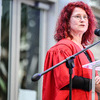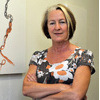Brave new world: On the edge of a second quantum revolution
05 May 2023 | Story Helen Swingler. Photos Lerato Maduna. Videography and Video Edit Ruairi Abrahams. Read time 10 min.Less than three decades into the 21st century, the world is at the edge of a second quantum revolution – one that integrates with the Fourth Industrial Revolution to create new technologies, new materials, and new, clean energy storage mechanisms.
It is also deepening humankind’s understanding of life-generating biological processes such as photosynthesis, said Professor Jeff Murugan in his 19 April inaugural lecture, “The Future is Quantum – How I learnt to stop worrying and embrace chaos”.
It was the first in the reconfigured UCT Inaugural Lecture Series.
The term “quantum revolution” was coined by quantum physicists Jonathan Dowling and Gerard Milburn in 2002. It refers to quantum mechanics, a framework used to describe the dynamics of matter, such as electrons in atoms and molecules at a fundamental level.
The study of quantum matter – the kind found in materials such as superconductors, magnets and graphene – sits at the nexus of a number of overlapping disciplines, including condensed matter physics.
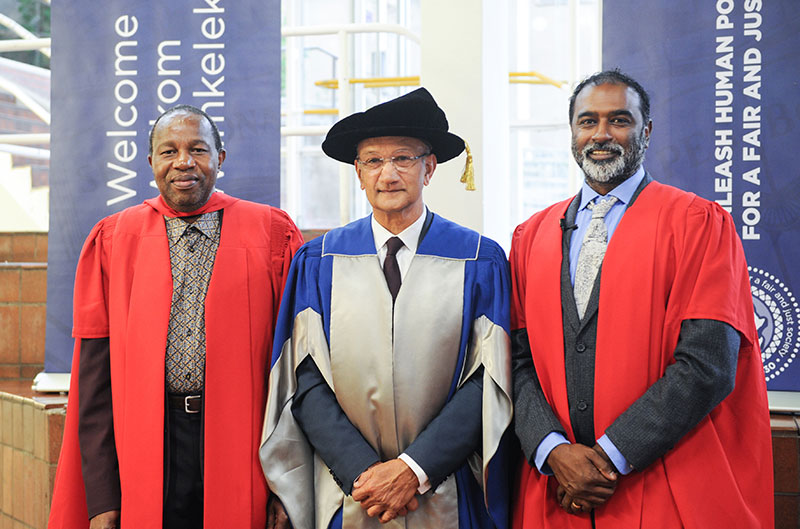
The title of Professor Murugan’s lecture was a play on words; “chaos” referring to both the realm of the everyday and the chaos that exists in realm of quantum particles because of their sometimes unpredictable properties.
The future is quantum
Early examples of quantum inventions include the transistor and laser. Lasers perhaps provide the easiest vehicle to demonstrate the enigma and potential of quantum mechanics. Lasers were developed in the 1950s by optical physicists who found that “hitting certain kinds of atoms at the right energy could lead these to emit more photons with the same energy and direction as the initial photons. The effect would cause a cascade of photons, creating a stable, straight beam of light”.
“Suddenly we’re talking about material science, computing, batteries, cryptography, and all things quantum.”
Harnessing the potential of a second quantum revolution has far-reaching implications, said Murugan, the founder and director of the Laboratory for Quantum Gravity & Strings (QGaSlab) in the Department of Mathematics and Applied Mathematics.
“Suddenly we’re talking about material science, computing, batteries, cryptography, and all things quantum,” he said. “And in other things, we’re better able to understand chemistry and biology in terms of quantum mechanics, for example, why photosynthesis is the most efficient energy-harvesting system known in nature is best understood in terms of a property of quantum systems known as superposition.”
Quantum computing has led big companies such as Google and Microsoft to invest heavily in quantum technologies, many teaming up with academic research institutions to create partnerships that will advance this technology.
Early developments
Murugan describes the mathematics at the heart of quantum matter as “beautiful”.
He and his talented young research group at QGaSlab, which corrals researchers in string theory, quantum gravity and cosmology, have made small but important breakthroughs in the field.
“There’s been a flurry of activity over the past five to six years, building this up.”
The result has been several research papers that explore the properties of these novel quantum systems.
Among these, quantum batteries are perhaps the most exciting possibility on South Africa’s radar right now: next-generation battery technology that can potentially revolutionise the nature of energy generation and storage.
“No South African needs to be convinced that alternative energy storage is a good thing to invest in,” said Murugan.
Unlike the batteries we know, such as the lithium-ion battery in smartphones that rely on classical electrochemical principles, quantum batteries rely solely on quantum mechanics.
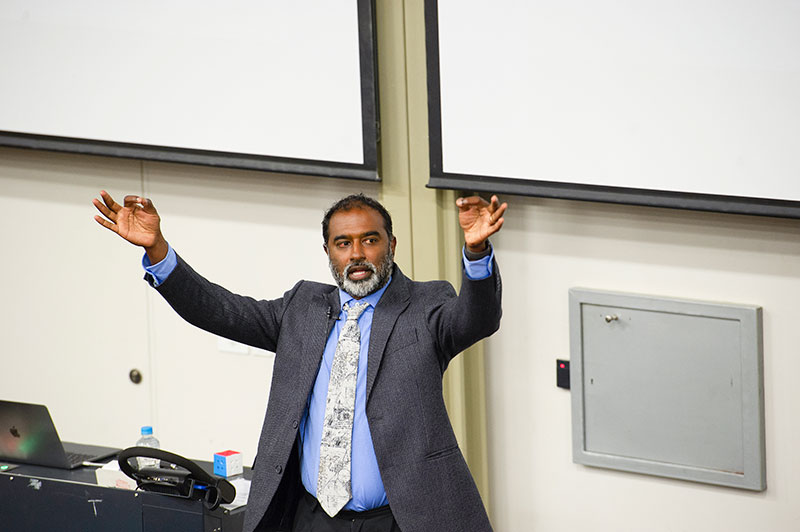
“They have a remarkable set of properties,” he explained. “Charging an ensemble of quantum batteries no longer scale linearly with the number of cells, but rather, exponentially. The more batteries there are, the faster they charge and the more batteries there are, the more energy you can deposit into that system, but exponentially faster. Remarkably, this quantum advantage of these batteries is because they are quantum chaotic!”
In the current era of rolling blackouts and Eskom’s uncertain future, the power of quantum batteries holds enormous potential for clean, reliable energy, he added.
Even though the possibilities are manifold, including new portable power sources for electric vehicles, which charge almost instantly, it is the fundamentally quantum aspect of these processes that intrigues Murugan, the mathematical physicist.
Chaos and purpose
But his beginnings as a mathematical physicist were not promising. At school he hated mathematics.
“It was boring, uninspired and disconnected from anything. Physics, on the other hand, was amazing. It was curious and made me think about the world around us.”
The turning point in his relationship with mathematics came with his introduction to calculus. It showed him that mathematics and physics were inextricably interwoven.
“Here was motion; things were happening. There was cause and effect.”
“Mathematics is really a language to understand the universe around us.”
From this, Murugan drew one of several life lessons that peppered his lecture, part of a legacy he would like to impart to his students (he is a 2018 Distinguished Teacher Awardee) and his children, he said.
“Mathematics is really the language of nature. And like any language, it can be learnt in two ways. You can learn it like a linguist, understanding the structure of the language and the etymology of its lexicon, or immerse yourself in a population, where you will learn how to speak the language, swear-words and all.”
Following undergraduate and postgraduate studies at UCT, in 2000 Murugan travelled to the United Kingdom on a Lindbury Fellowship to pursue a PhD in non-commutative geometry in string theory, jointly at UCT and Worchester College, Oxford. He was co-supervised by UCT’s Emeritus Distinguished Professor of Complex Systems George Ellis and Philip Candelas, until recently Rouse-Ball Professor of Mathematics University of Oxford.
Postdoctoral studies followed at the High Energy Theory Group at Brown University in the United States. He returned to UCT in 2006 to join the Cosmology and Gravity Group, founded by Emeritus Professor Ellis. He left to begin QGaSlAB in 2012. In doing so, he had entered a new world of possibilities, perhaps too many, he said.
“I am a mathematical physicist with a very short attention span so, unlike many of my colleagues, I don’t spend too long thinking about any particular problem. My career has basically been a random walk through interesting problems in mathematical physics that include gravity, condensed matter, neurophysics, and even traffic flow.”
This underpinned his final lesson in his lecture: “Never stop learning!”
Family business
The vote of thanks following Murugan’s presentation was delivered by his wife, UCT cosmologist Professor Amanda Weltman, the director of the High Energy Physics, Cosmology & Astrophysics Theory group at UCT and SARChI Chair in Physical Cosmology.
“He takes very complex mathematical topics and unwraps them strand by strand.”
Their three young children also attended the lecture, the littlest charming the audience over her father’s shoulder while another put his mind to bossing a Rubik’s speed cube (a love of the abstract runs in the family).
In her address, Professor Weltman said, “There’s never any doubt that Jeff was destined to be a professor of mathematical physics. His innate talent and great curiosity for understanding the universe and our world within it are two qualities that have helped him become a leader in the field and one of the most sought-after professors in the country.
“Part of his appeal is that he takes very complex mathematical topics and unwraps them strand by strand. But best of all, he does so with great humour and there would be thunderous applause regularly coming from his lectures. You’d be forgiven for thinking you were at a comedy festival. And I would know that I would have to go in [to teach] next.”
 This work is licensed under a Creative Commons Attribution-NoDerivatives 4.0 International License.
This work is licensed under a Creative Commons Attribution-NoDerivatives 4.0 International License.
Please view the republishing articles page for more information.
Research & innovation
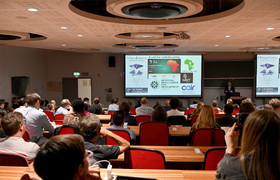
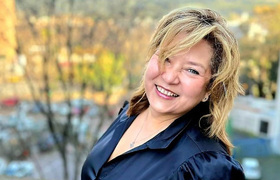
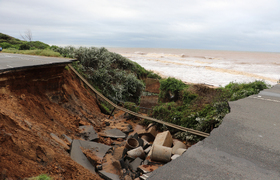


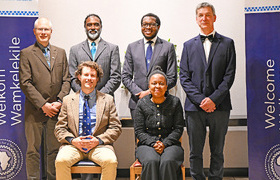
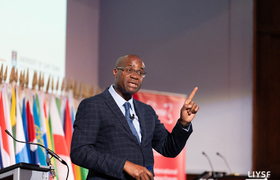


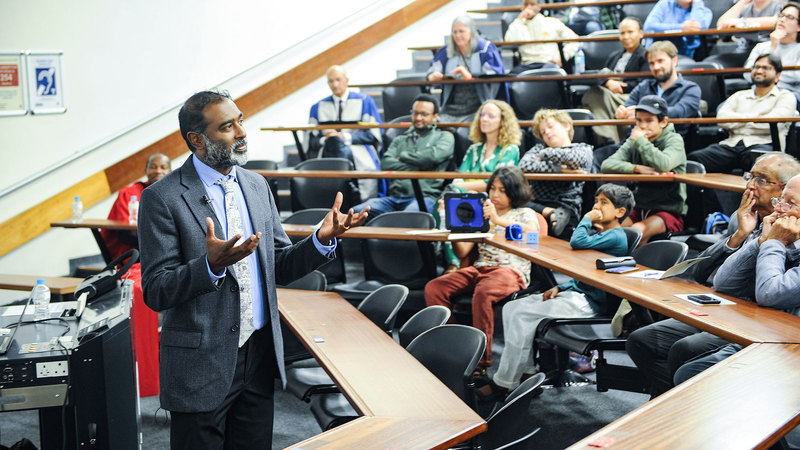


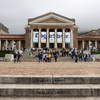





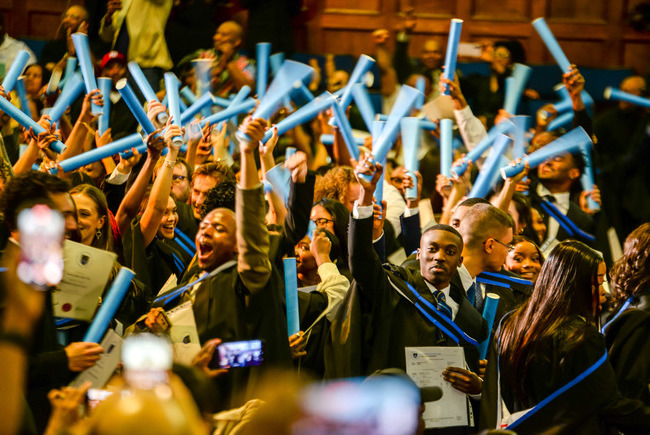
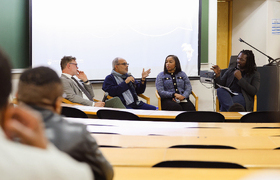
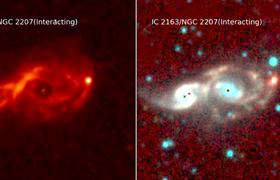
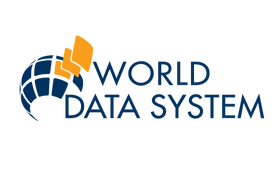

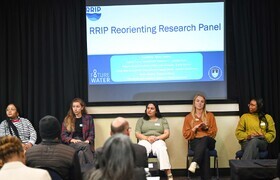
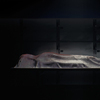



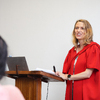



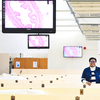
.jpg)



